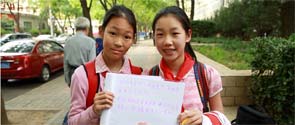Editor's Note: Keywords to Understand China: the Belt and Road Initiative is a selection of "China Keywords" entries included in an eponymous multilingual platform to help readers better understand China’s B&R Initiative. It is one of the major projects implemented by the China International Publishing Group and the China Academy of Translation.
Steering Group for the Belt and Road Initiative
Implementing the Belt and Road Initiative is a massive undertaking. Domestically, it involves a wide range of government agencies, businesses and civil society organizations. Many projects are likely to extend over years. Integrated planning and guidance are essential.
A steering group for the Belt and Road Initiative has thus been established at the national level to study important issues related to planning, policy, and projects, and to provide guidance and coordination in the implementation of the initiative.
Headed by Vice Premier Zhang Gaoli, who is also a member of the Standing Committee of the Political Bureau of the CPC Central Committee, the group consists of representatives from relevant government agencies including Foreign Ministry and Commerce Ministry.
The secretariat of the steering group, which is placed under the National Development and Reform Commission, is responsible for the day-to-day work of the group. Ministerial and provincial level steering groups have also been established, each headed by a key member of the leadership team of the ministry or province (autonomous region and municipality) concerned.
Joining Hands to Build a Silk Road Economic Belt and a 21st-Century Maritime Silk Road – Vision and Actions
At the Boao Forum for Asia on March 28, 2015, a white paper entitled Joining Hands to Build a Silk Road Economic Belt and a 21st-Century Maritime Silk Road – Vision and Actions was issued by China's National Development and Reform Commission, Ministry of Foreign Affairs, and Ministry of Commerce, with the authorization of the State Council.
The document explains the background of the initiative, and outlines its guiding principles and broad objectives, and the priority areas and mechanisms for cooperation. It emphasizes the need for joint efforts through consultation to bring benefits to all, and calls for policy coordination, infrastructure connectivity, unimpeded trade, financial integration, and strengthened people-to-people ties.
Also highlighted is the inclusive approach to building the Belt and Road, with a focus on finding win-win solutions – achieving success requires collaboration of the countries along the proposed routes rather than a solo performance by China. The white paper goes on to illustrate the specific roles that can be played by China’s autonomous regions and provinces like Xinjiang and Fujian in implementing the initiative.
The compilation of this white paper was a participatory process. Comments and suggestions were sought from the countries along the proposed routes and interested international organizations, as well as from various quarters in China.
The document focuses only on the general direction, broad guidelines and objectives of the Belt and Road Initiative. Further details will be discussed by China and its partners.
A five-pronged approach
In his speech at Kazakhstan's Nazarbayev University on September 7, 2013, President Xi Jinping proposed building a new Silk Road Economic Belt by promoting policy coordination, road connectivity, unimpeded trade, currency convertibility, and strengthened people-to-people ties.
At the Boao Forum for Asia on March 28, 2015, the Chinese government issued a white paper entitled Joining Hands to Build a Silk Road Economic Belt and a 21st-Century Maritime Silk Road – Vision and Actions. This document also calls for policy coordination, infrastructure connectivity, unimpeded trade, financial integration, and strengthened people-to-people ties (a five-pronged approach), so as to build a community of shared interests and responsibility and with a shared future on the basis of mutual trust, economic integration and cultural inclusiveness.
While the five components of this approach are distinct from one another and will have a shifting focus at different stages in building the Belt and Road, they form an integrated whole, and are inseparable and mutually reinforcing.
(The opinions expressed here do not necessarily reflect the opinions of Panview or CCTV.com)

Panview offers a new window of understanding the world as well as China through the views, opinions, and analysis of experts. We also welcome outside submissions, so feel free to send in your own editorials to "globalopinion@vip.cntv.cn" for consideration.















